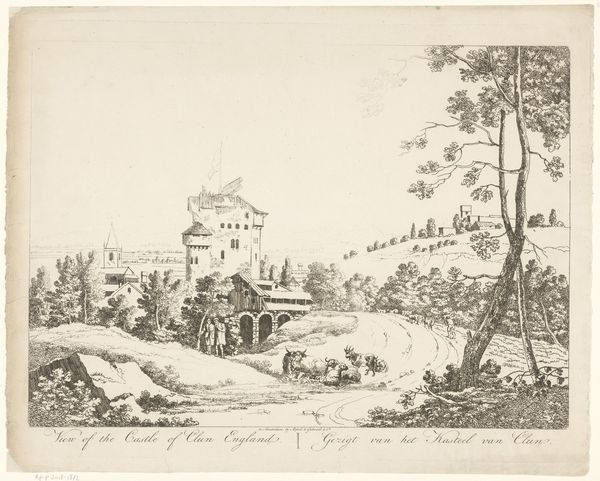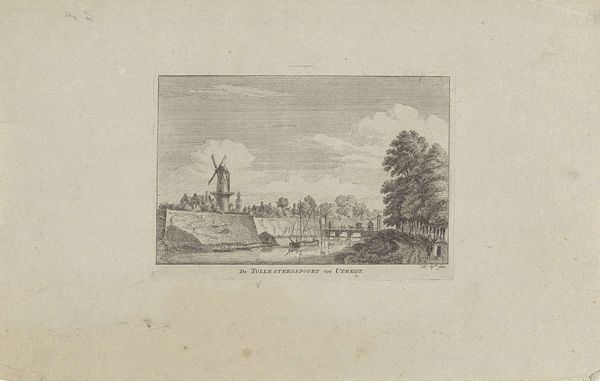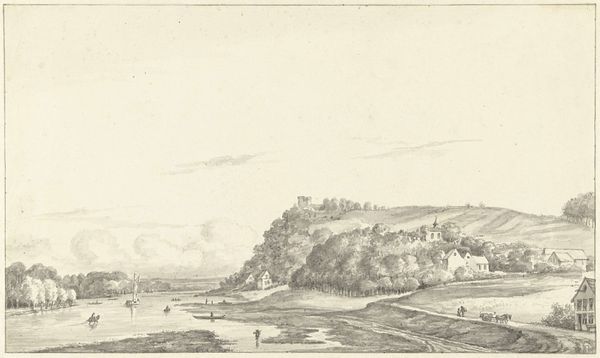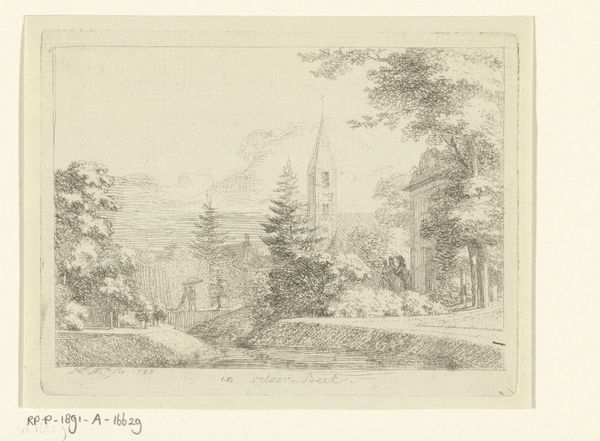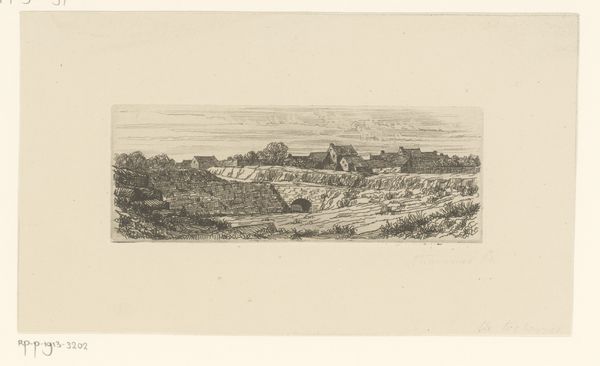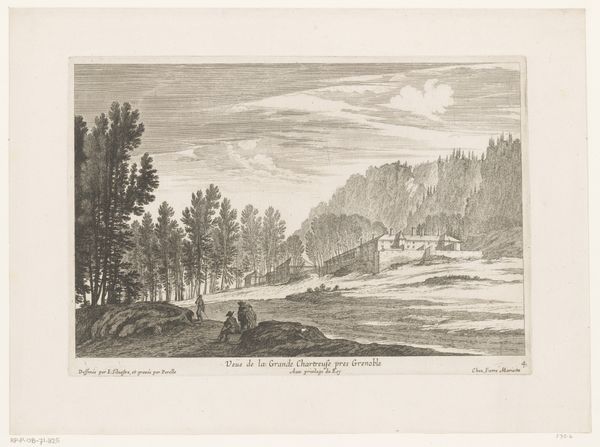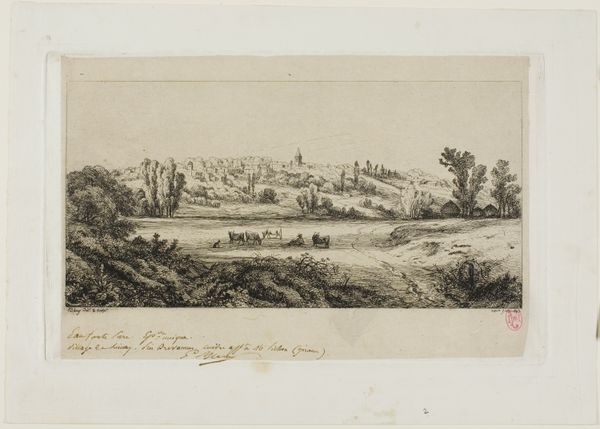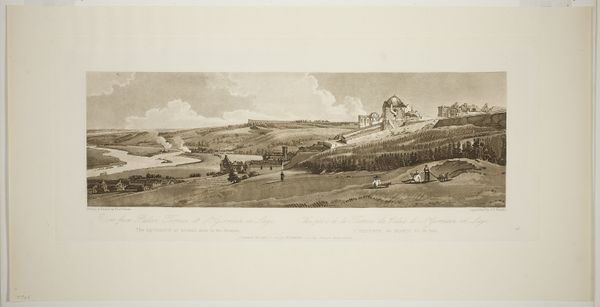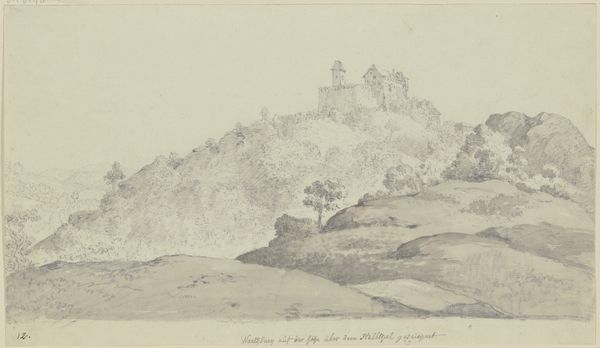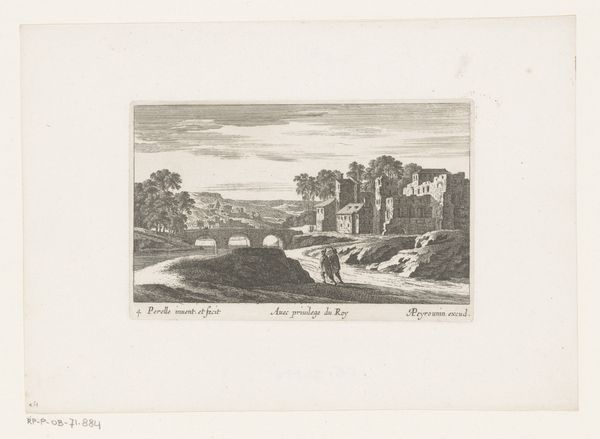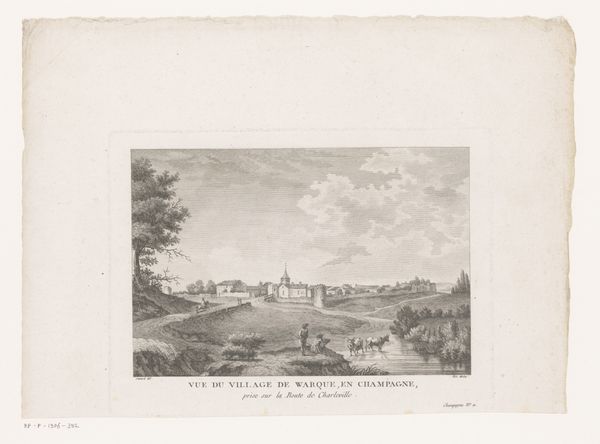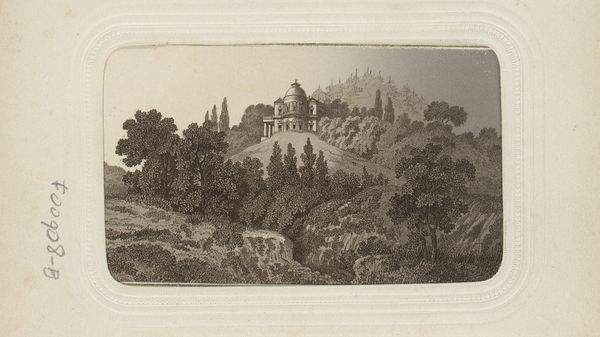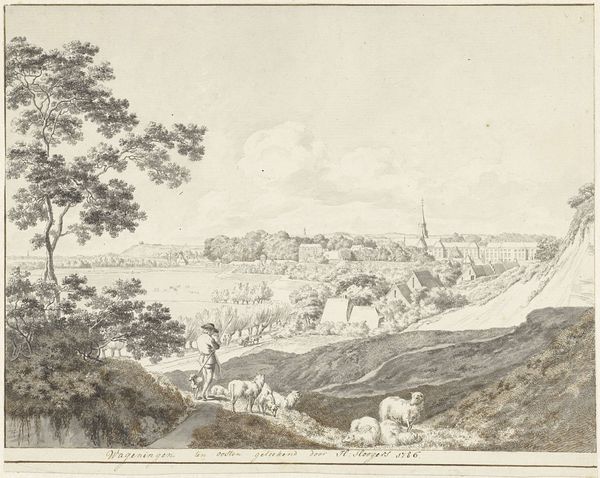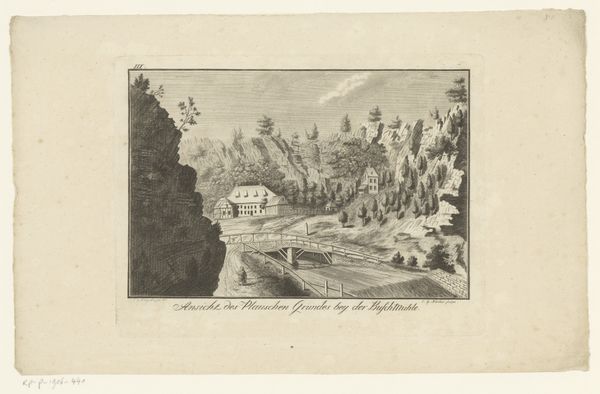
Dimensions: height 210 mm, width 275 mm
Copyright: Rijks Museum: Open Domain
Gerrit Postma made this pencil drawing of the Bois de Boulogne. We're presented with a landscape, but it's not just any landscape; it's a carefully curated one. The Bois de Boulogne, located on the edge of Paris, was transformed into a public park during the mid-19th century, offering green space that was carefully constructed. Here we see the artist depicts a picturesque scene with a windmill, a distant castle, and rolling hills, inviting viewers to imagine leisurely strolls and idyllic picnics. The Bois de Boulogne was initially conceived by Napoleon III and reflected the social and political agendas of the time. Such parks aimed to provide recreational spaces for the growing urban population, but also served as symbols of imperial power and control over nature. The act of creating such spaces involves a deliberate reshaping of the environment for the purpose of entertainment. By studying archival documents, landscape designs, and social commentaries, we can gain insights into the values, aspirations, and power dynamics that shaped both the artwork and its historical context.
Comments
No comments
Be the first to comment and join the conversation on the ultimate creative platform.
